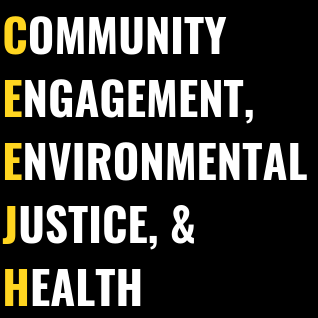Environmental Health Disparities
Juarez, P. D. et al. 2014. https://doi.org/10.3390/ijerph111212866
Populations who live in or are exposed to unhealthy environmental ecosystems may experience environmental health disparities in asthma, cancer, cardiovascular disease, diabetes, and mortality rates. Racial/ethnic health disparities are produced and maintained because populations of color are more likely to encounter high risk settings in their communities which results in greater exposure to social disamenities (e.g., poverty, institutional racism, crime, violence, isolation, disorder, stress) and environmental disamenities (e.g., noise, air pollution, water pollution, urban blight and decay, dilapidated housing stock, low-quality infrastructure, animal and insect vectors, locally unwanted land uses) and adverse health risks. Living in or exposure to these riskscapes leads to environmental justice communities and populations being the most vulnerable to the effects of environmental hazards, air pollution, toxic chemicals, urban decay, man-made and natural disasters, and climate change. Over time, the number and duration of such exposures come to affect health outcomes, a phenomenon known as the public health exposome.
In order to address environmental health disparities throughout Maryland, CEEJH has partnered with the Maryland Department of Health’s Environmental Public Health Tracking (EPHT) program. The CDC EPHT program is a national network of data, exposures, and population characteristics that have been gathered and disseminated in order to help solve environmental and health issues across the United States. CEEJH conducts outreach and provides technical assistance on behalf of the EPHT program in order to engage communities around the availability and application of EPHT data and products.

